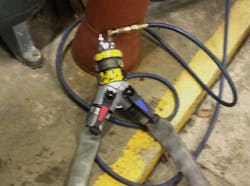Fire Instructors: Do You Keep Up Your Skills?
Last time, we discussed some shortcomings that we see in the classroom and materials that we use for our training evolutions. We also identified some common characteristics for instructors; some good, and some that are less than positive. Now that we have brought these issues to light, the question that remains is; what do we do about facilitating change and making positive strides towards improvement.
Acceptance of limitations
We all possess some internal beliefs about our own capabilities, which can be both positive and negative. The problem comes when we refuse to accept our limitations, and they come in many forms:
- Displacing Responsibility, or blaming someone else for your own shortfalls;
- Diffusing Responsibility, a group using unethical behavior with no one person being responsible (We never wear our gear when we do that);
- Advantageous Comparison, comparing one to someone who is worse (I may be late, but John is always late);
- Distortion of Consequence, minimizing the harm of the decision (It’s only a little NAPTHA, what could happen…?)
The bottom line is this: we cannot fix the problem without first identifying the issue. It is all part of “transformational leadership.” Defining the problems in the fire service includes finding the problem within all of us; what works, what doesn’t work, what has changed, and what are we doing about it to facilitate this change. As instructors, we are primary stakeholders in this need for change. We must possess the ethical beliefs and the motivation to make the service better.
Continuing education
Here’s the question for all of us: What have we done lately for ourselves that will result in our personal improvement in the fire service? The answer isn’t what trainer course have we taken to broaden our teaching cache, the answer should be something that made our delivery better in the process. Case in point: This author’s tenure in the fire service includes eight versions of the basic firefighter training manual at the state level, and each one was reviewed and studied when it came out. The reason: we are instructors, responsible for training the future of the fire service; shouldn’t we know the materials? When we stand in front of the classroom, we have two characteristics that lend to our credibility: expert power and information power. Expert power is the power an instructor has based upon the knowledge, skills and abilities they bring into the training session. This expertise is what gives credibility to their ability to teach the topic. Information power comes from the knowledge that we share, and this knowledge should be accurate and given freely. If we don’t know our topic, there exists an ethical issue with us acting on perceived power (see Photo 1).
Mentoring and supportive alliances
Having a mentor (or many mentors) has served this author well, and continues to do so while traveling throughout the world of emergency services. Having a relationship with leaders who provide information, guidance and support improves the overall product the instructor has to offer. It also provides social acceptance and confirmation of skills, and results in increased competence, increased motivation and improved course delivery to the customer (see Photo 2). This coaching concept provides a trusting, supportive relationship that identifies both good and bad skills that the instructor can benefit from. This feedback should be used to maintain current performance and improve levels on the training ground and the fireground as well.
Anticipate “Plan B”
In the perfect scenario, the training logistics match up, the materials needed are always on-scene, all of the PPE is available, the equipment starts the first time and the fire always goes out as planned. The truth is, the training ground rarely runs perfectly. Our responsibilities don’t start and end during the training session; the apparatus, personnel and equipment needed for the evolution falls within the realm of the training staff. However, even the best laid plans can fall short, due to circumstances beyond our control.
For example, one boot school class was run in the winter, and a session in standpipe operations were done during a frigid day. Considering the safety hazards of water freezing in the standpipe and on the training grounds, an alternative measure was developed. Fittings were adapted to incorporate air within the standpipe and hoselines, resulting in a much safer training environment (see Photo 3). Another example included the construction of a floating dock used to simulate a slab of ice for one department’s ice rescue training (see Photo 4). The moral of the story is this: be prepared to adapt to the situation, and keep an alternative plan within reach.
Conclusion
As an instructor, despite our best efforts, there are certain things that we cannot teach our audience, including experience, maturity, and to an extent, proficiency (which is dependent on the student). However, what we can teach them is respect for the business, have accountability for one’s decisions, use ethical behavior, and follow the path we should be on. It takes a knowledgeable instructor to serve as a catalyst for change, stand tall in the face of tradition and share their abilities freely to ensure the success of their audience.
So...are you “good enough” to make the stand?
